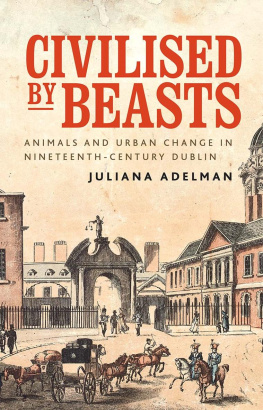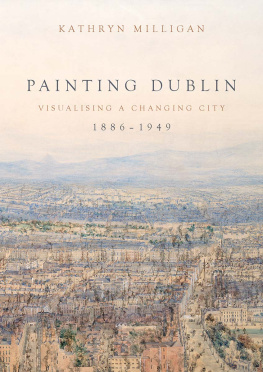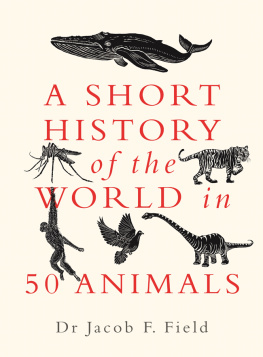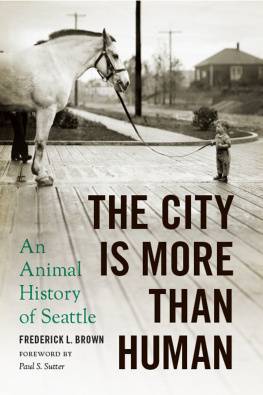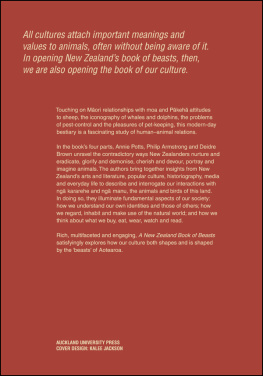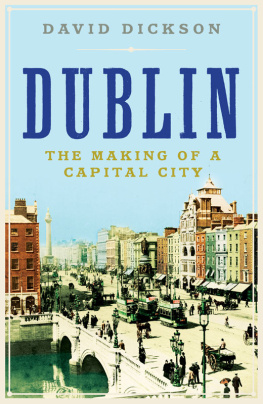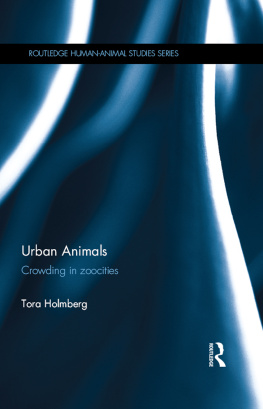Civilised by beasts
Animals and urban change in nineteenth-century Dublin
Juliana Adelman
Manchester University Press
Copyright Juliana Adelman 2020
The right of Juliana Adelman to be identified as the author of this work has been asserted by her in accordance with the Copyright, Designs and Patents Act 1988.
Published by Manchester University Press
Altrincham Street, Manchester M1 7JA
www.manchesteruniversitypress.co.uk
British Library Cataloguing-in-Publication Data
A catalogue record for this book is available from the British Library
ISBN 978 1 5261 4605 2 hardback
First published 2020
The publisher has no responsibility for the persistence or accuracy of URLs for any external or third-party internet websites referred to in this book, and does not guarantee that any content on such websites is, or will remain, accurate or appropriate.
Cover: Samuel Frederick Brocas, View of the castle gate and Royal Exchange, c. 1820. Image Courtesy of the National Library of Ireland.
Typeset by
Servis Filmsetting Ltd, Stockport, Cheshire
In memory of David Prifti (19612011)
One of the best human animals I have ever known
Contents
This was supposed to be a book about zoology in Dublin. To paraphrase Gerald Durrell, once I let some of the citys ordinary animals into the book they proceeded to establish themselves and invite all their friends to share the chapters. The result is, I believe, a much richer story about the nineteenth-century city.
The transformation of my research project had already begun when I received an intriguing notice from the Dublin City Council. My husband and I had applied for planning permission to convert our shed into an office and permission was granted on the condition that we did not use the shed for the keeping of pigs, poultry, pigeons, ponies or horses. Here were the bye-laws that many nineteenth-century reformers fought for, still being deployed to maintain the boundary between urban and rural life in the twenty-first century. They begged the question of how and why the Council decided to prohibit keeping animals in sheds and what the city was like before it did so. This book begins to answer these questions and my hope is that the stories I tell here show how much recent urban change is about animals as well as people. Dublin provides an example of a conflict common to Western modernising cities in the nineteenth century. Urban development consumed more animals to serve human needs from food to companionship, just as modern ideas demanded that these animals be controlled, regulated, eliminated or concealed in the urban environment. The resolution of this dilemma, and the compromises it created, had consequences for human and animal lives.
I have set the boundaries of my study by significant animal-related developments. The book opens not with the coronation of Queen Victoria but with the foundation of the Dublin Zoological Society in 1830. It closes in 1900 not because that is the end of the century but because in that year a second public health report on the city explicitly condemned the persistence of private slaughterhouses and dairy yards.
The cities that so many of us live in today reflect the accumulation of decisions made about animals more than a hundred years ago. If our forerunners had defined urban modernity differently or pursued different reform agendas, I might have a shed full of poultry, pigs or a pony. Instead, Im here with my cats.
Note
Durrell was writing about how his family members invaded his intended work on the natural history of Corfu. See The Corfu Trilogy (London: Penguin, 2003 [1978]), p. 5.
My first debt is to my husband, Martin Fanning. While this book has been progressing (or stalling) we have been raising two children, two fish and two cats. We have lived in two houses. There has been joy and sorrow and boredom and excitement and plenty of fatigue. I can honestly say that I would not have finished this without him. We have been a team, sometimes more SpongeBob and Patrick than Batman and Robin. I am lucky, and grateful, to have him in my corner. Thank you to Aidan and Cian Fanning who made this book much more difficult but our lives much more interesting. Thanks also to my family. My mother, Lydia Rogers, has always been interested in animals and is the definition of life-long learner. My father, Burt Adelman, has managed to continue to sound genuinely interested in all my pursuits no matter how arcane. My brother Ian and my sister Elizabeth have listened to me talk about this a lot without asking too often when I thought I might finish it. Thanks to the Ballymun Kickhams Mothers & Others football team and the Huffers and Puffers who have kept me sane and relatively fit, and are looking forward to the party Ive promised them.
I would also like to thank many colleagues who have had the dubious privilege of reading draft chapters. Special thanks goes to the three anonymous reviewers for Manchester University Press who exemplified the best version of the peer review process. Their constructive comments helped to significantly improve this book. I also thank Kelly Adamson, Nina Bresnihan, Sean Connolly, David Dickson, Deirdre Foley, Lisa Griffith, Carole Holohan, Alice Jorgenson, Jimmy Kelly, Matthew Kelly, Leeann Lane, Sinead McNally, William Murphy, Cormac Grada, Eoin OMahony, Ciaran ONeill, Jennifer Redmond and Ciaran Wallace for reading all or part of the manuscript (sometimes more than once). Thanks to my writing wives, Catherine Cleary and Aoibheann Sweeney, who not only read drafts but whose encouragement and positivity made me believe this could actually get done. Mistakes and infelicitous phrasings are all my own.
Thanks to the Irish Research Council and to the Trinity Long Room Hub who funded my initial years of research on this project, as a postdoctoral fellow at Trinity College Dublin from 2008 to 2011. A semester research fellowship from St Patricks College, Drumcondra helped to revive the flagging project and funding from the Faculty of Humanities and Social Sciences at Dublin City University helped to defray image costs.
I would like to thank the staff of the libraries and archives that have been critical to the research for this book. The National Library of Ireland became a home away from home and I have always found the librarys staff helpful and professional. I hope the government gets around to funding them in the way they deserve. Thank you to the Royal College of Physicians in Ireland, the Dublin City Library and Archive, Early Printed Books and Manuscripts at Trinity College Dublin, the Royal Irish Academy, the Royal Dublin Society and the National Archives. Thanks also to the Guinness Brewery (Diageo), the Royal Society for the Prevention of Cruelty to Animals and the Dublin Society for the Prevention of Cruelty to Animals for allowing me to access their institutional records.
Thank you to Alun Richards at Manchester University Press for taking an interest in this book and shepherding it successfully through the process. He has been thorough and responsive.
I was a little incredulous when I heard him say, that man had been civilized by wild beasts.
On 10 May 1830, Dr Whitley Stokes spoke to a hall packed with Dublins gentlemen and noblemen. He congratulated them on the foundation of a zoological society, a project he had been advocating for at least a year. Humans owed the beasts an education, he joked, because man had been civilized by wild beasts. To convince those who were a little incredulous, Stokes explained that the first cities had been founded to protect humans from beasts. Ancient men and women gathered behind walls to guard against their inroads.

